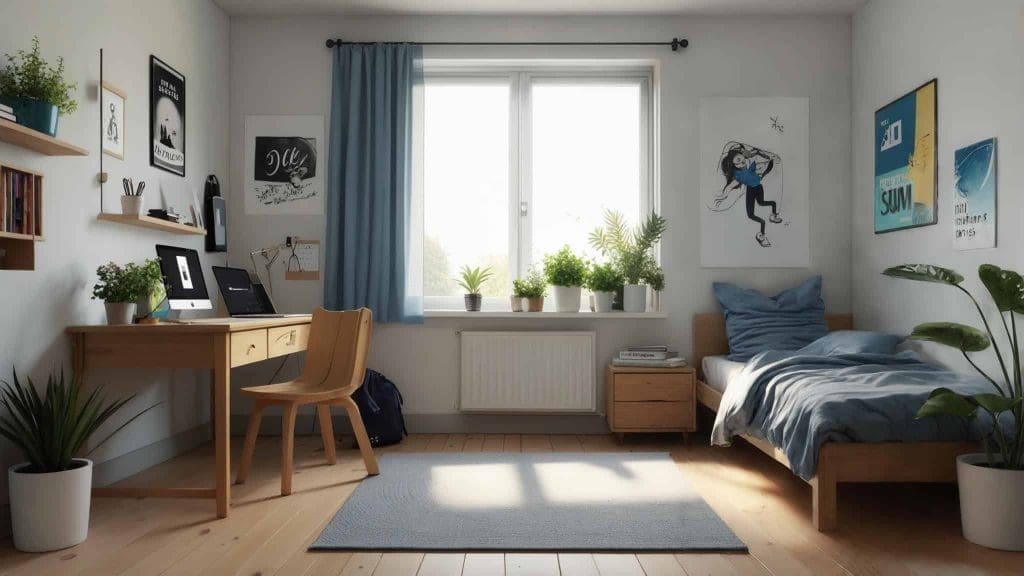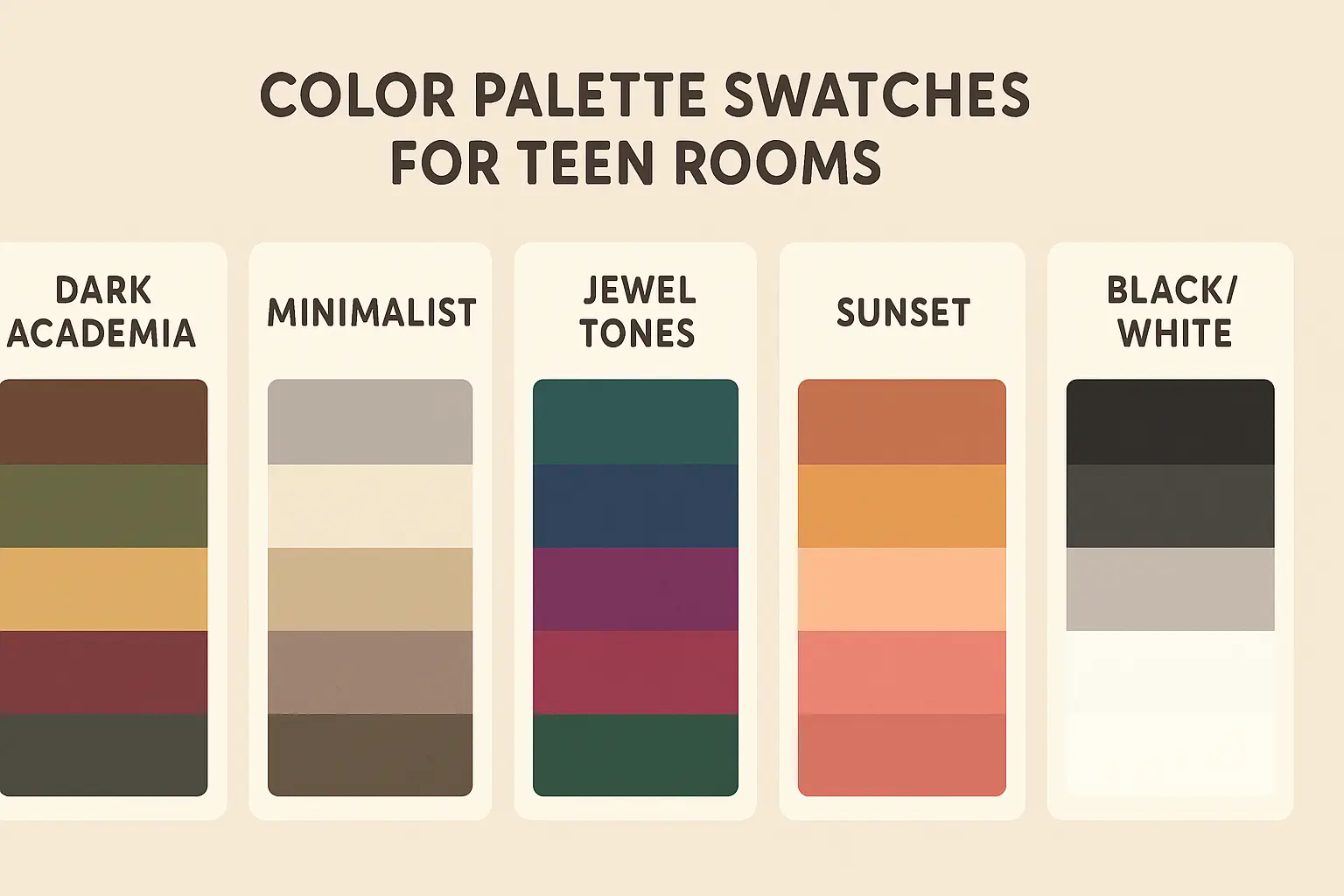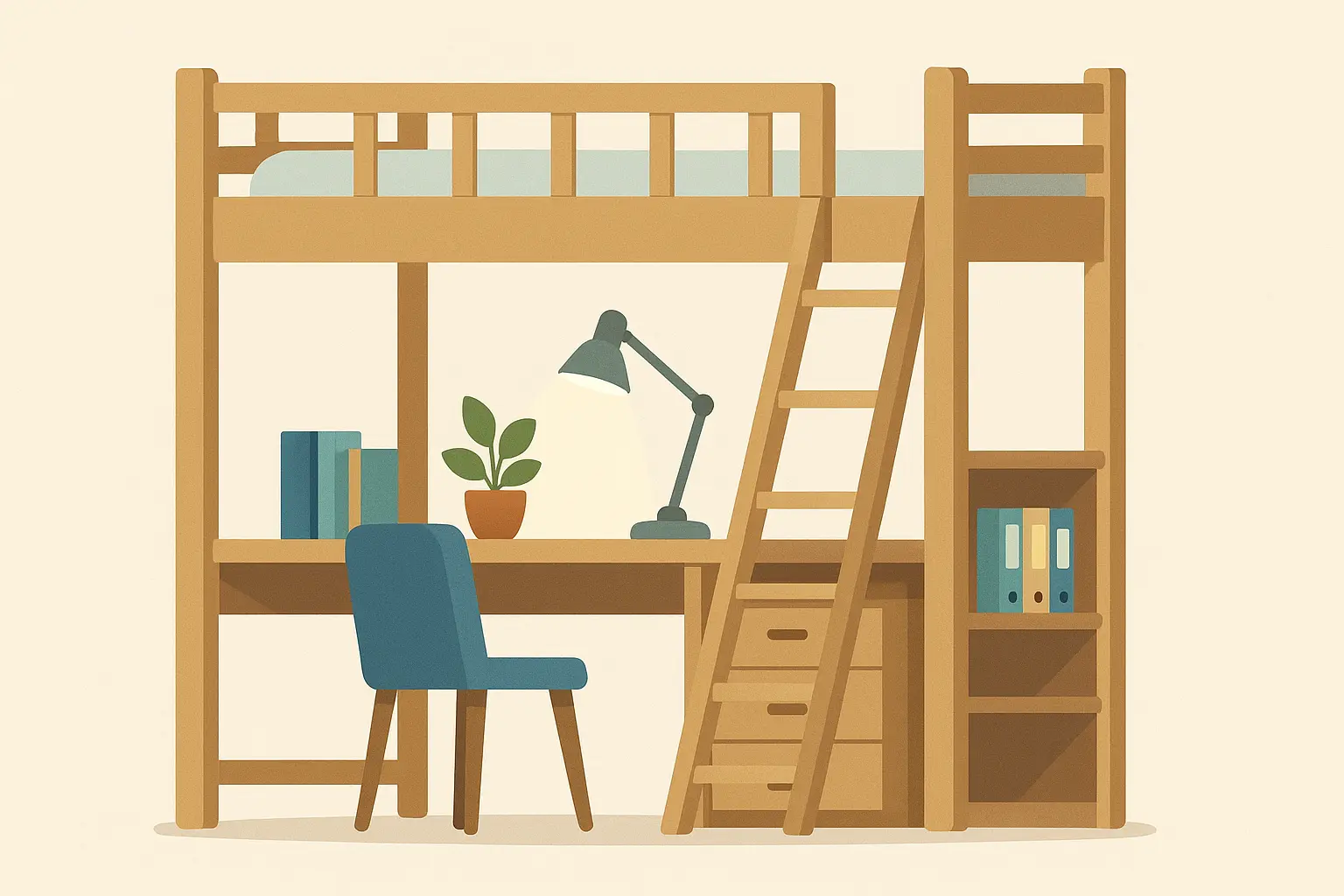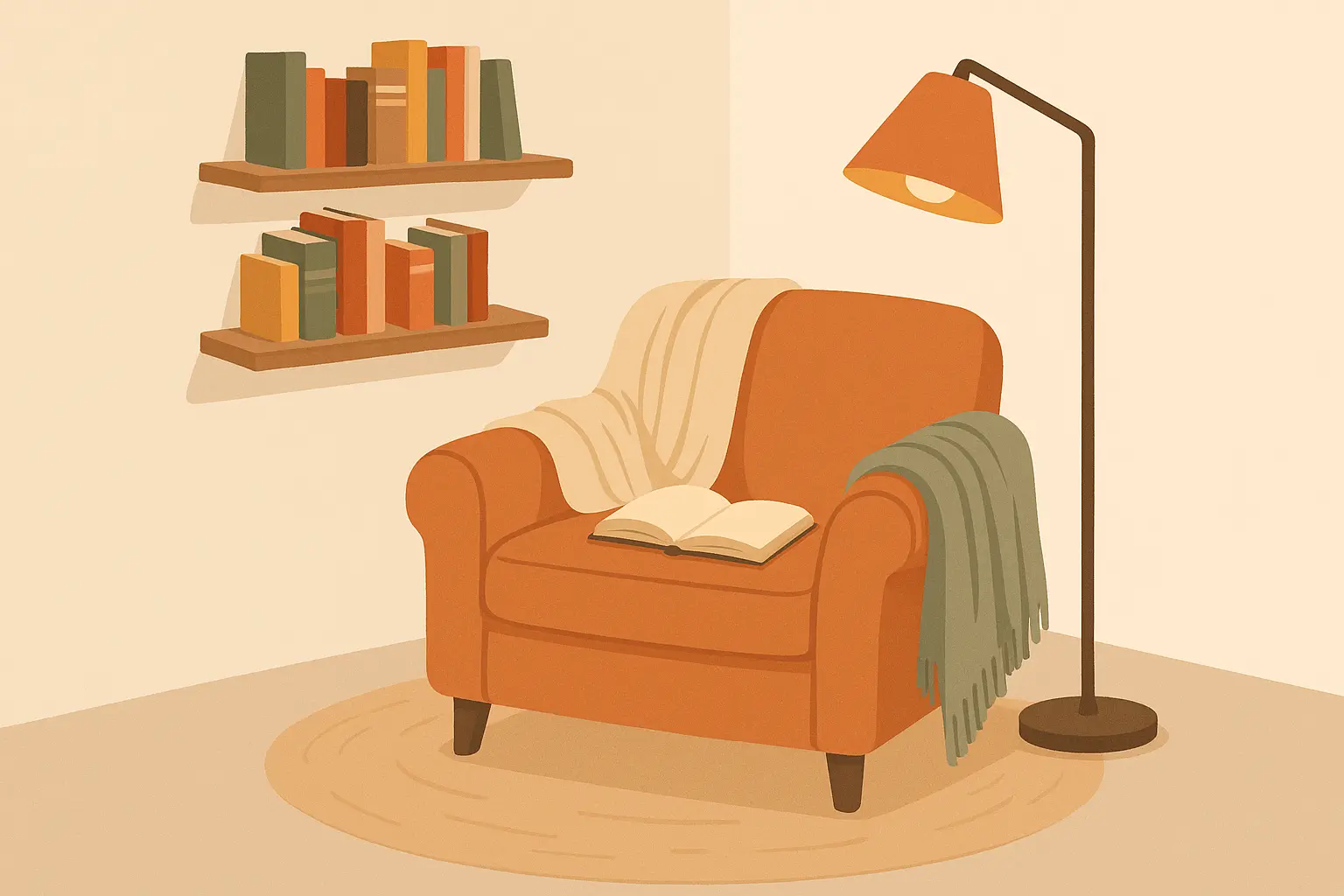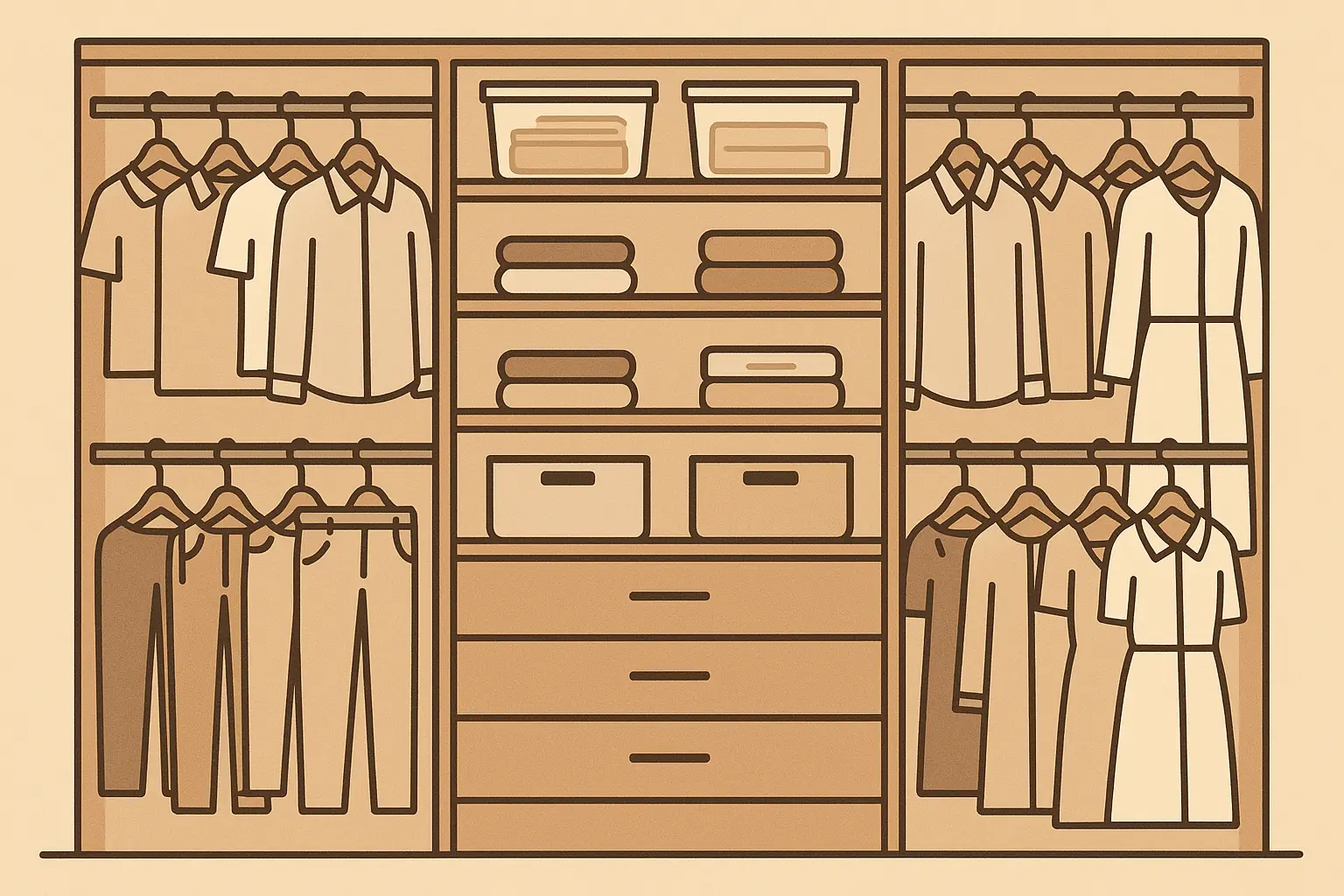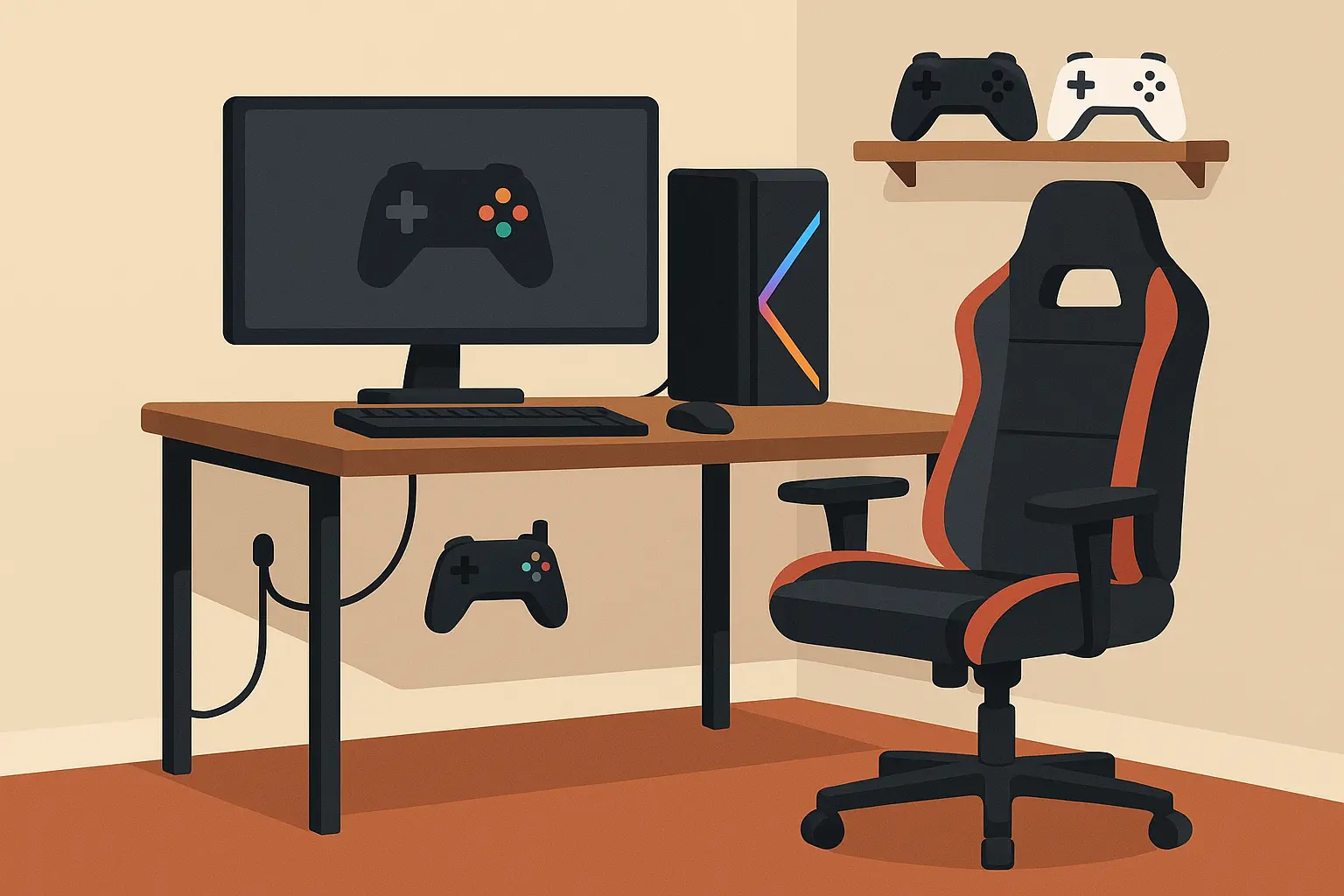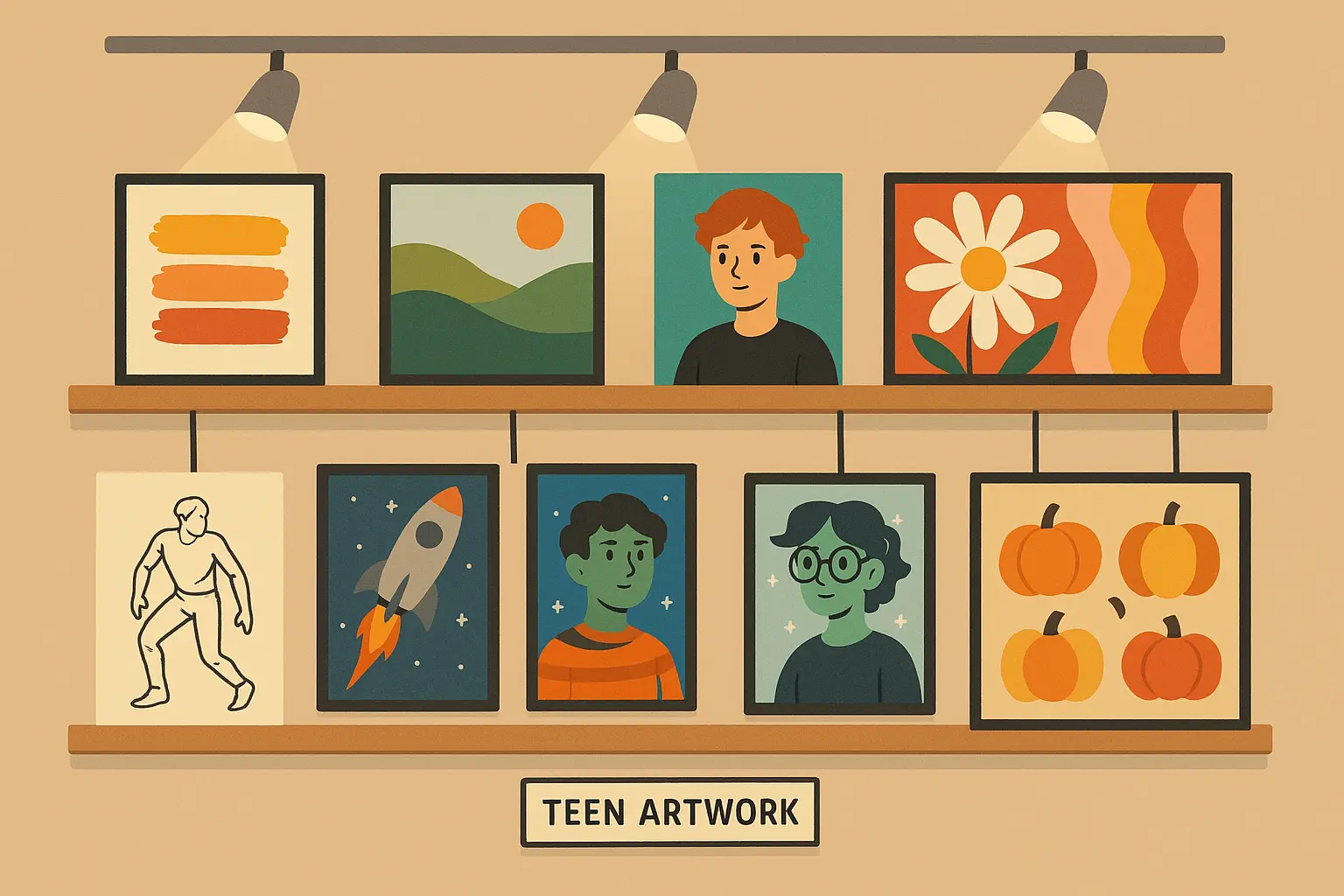25 Teen Room Ideas That Will Transform Any Space Into Their Dream Sanctuary
Look, I get it – designing a teen’s room is like trying to hit a moving target. One day they’re obsessed with unicorns, the next they’re rolling their eyes at anything remotely ‘childish.’ Been there! Creating the perfect teen room feels overwhelming when you’re trying to balance what looks cool with what actually works for daily life.
According to Architectural Digest, teen bedrooms need to bridge the gap between childhood and adulthood by incorporating mature foundations with personality-driven design elements that can evolve alongside the inhabitant. I remember when my own teenage space felt like a constant battle between wanting something “cool” and needing it to actually work for studying, sleeping, and hanging out with friends – it’s a challenge every parent and teen faces together.
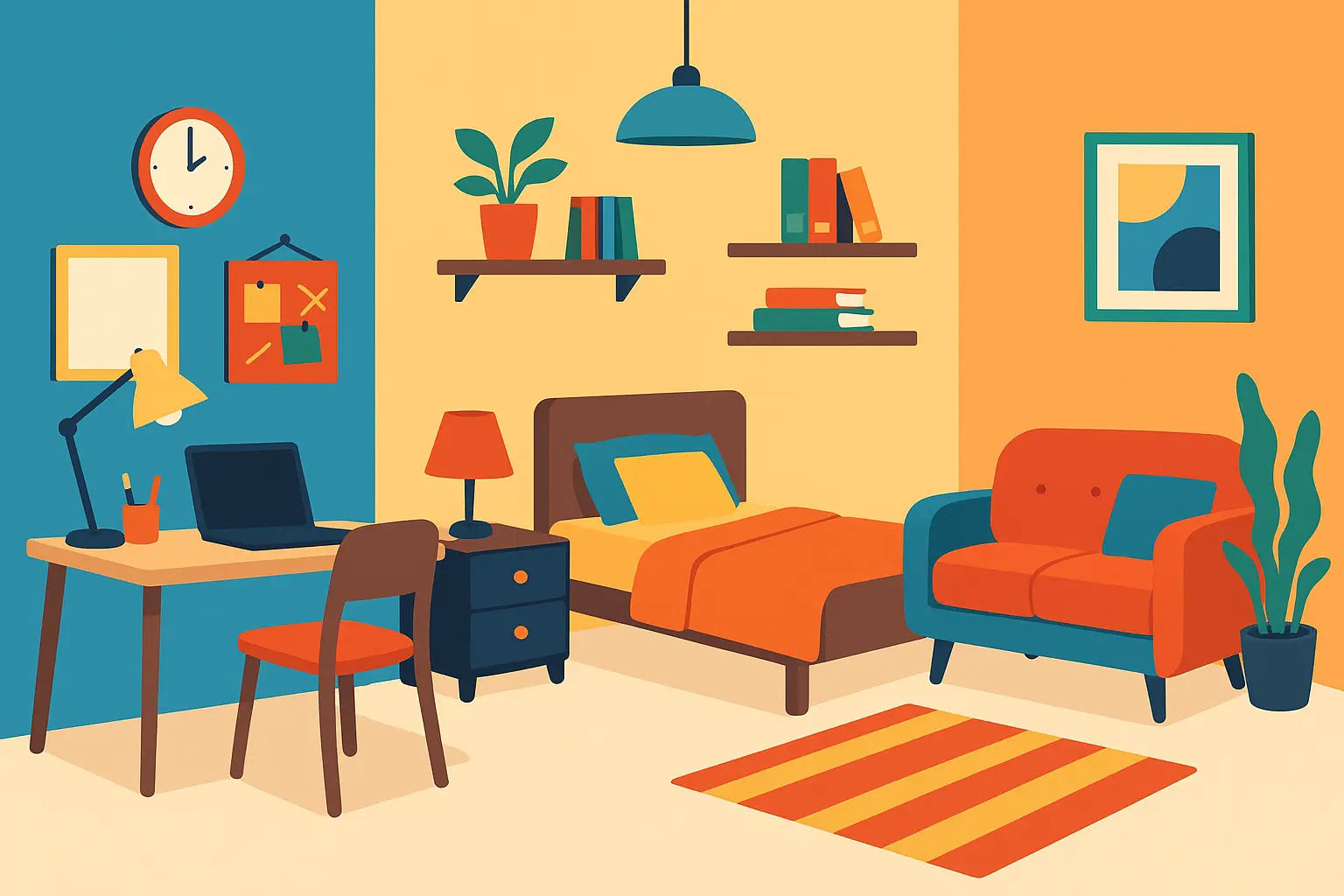
Table of Contents
-
Key Considerations for Teen Room Design Success
-
Color Schemes & Themed Approaches (Ideas 1-5)
-
Smart Furniture & Layout Solutions (Ideas 6-10)
-
Storage & Organization Systems (Ideas 11-15)
-
Technology & Entertainment Zones (Ideas 16-19)
-
Study & Productivity Spaces (Ideas 20-22)
-
Personalization & Creative Expression (Ideas 23-25)
-
Evaluating Ideas Against Your Teen’s Needs
-
How JiffyJunk Supports Your Teen Room Transformation
-
Final Thoughts
TL;DR
-
Teen rooms must balance personal expression with functionality across sleeping, studying, socializing, and relaxation needs
-
Budget-conscious options like photo walls and behind-door organization deliver maximum impact without major investment
-
Multi-functional furniture pieces like loft beds with desks and storage ottomans maximize space efficiency
-
Technology integration should focus on creating dedicated zones for gaming, content creation, or music production
-
Adaptable design choices ensure the space grows with your teen rather than requiring complete overhauls
-
Professional cleanout services can clear existing clutter and outdated items before implementing new design ideas
Essential Planning Factors for Teen Room Success
Let’s be honest – you’re probably reading this at 2 AM after your teen complained (again) that their room ‘doesn’t feel like them anymore.’ Before diving into specific design ideas, I want to share the core considerations that determine whether your project succeeds or becomes a frustrating money pit. These factors include prioritizing personal expression during identity development, ensuring multi-functional use for various activities, establishing realistic budgets and timelines, assessing space limitations, choosing durable materials, and selecting adaptable elements that can evolve with changing tastes and maturity levels.
Personal Expression Takes Priority
Teenagers are navigating crucial identity development phases, making personal expression the most important design consideration. Your teen’s room should reflect their unique personality, current interests, favorite colors, music preferences, and evolving passions. This means involving them directly in design choices rather than imposing adult preferences.
I’ve seen too many parents create beautiful rooms that their teens hate because they didn’t get input on what actually matters to them. Ask your teen what they love, what drives them crazy about their current space, and what they dream about having. Your teen will probably hate 40% of your suggestions. That’s normal. Start with the 60% they don’t completely despise.
Multi-Functional Spaces Work Harder
Teen rooms serve as bedrooms, study halls, social spaces, and personal retreats all in one. Make every piece of furniture earn its keep – every design element should contribute to at least one core function: sleeping, studying, socializing, or relaxation. This approach maximizes your available square footage while meeting diverse daily needs.
Think about how your teen actually uses their space throughout the day. Do they sprawl on the floor to do homework? Do friends come over to hang out? Understanding these patterns helps you design zones that support real activities, not what you think they should be doing.
Budget Reality and Timeline Planning
Here’s the thing about budgets – your teen’s taste is probably way more expensive than your wallet. Start by figuring out what you can actually spend without eating ramen for a month. Remember that teen tastes evolve rapidly, so invest in adaptable foundation pieces while keeping trendy elements affordable and easily changeable. Understanding the true costs behind furniture removal can help you budget for clearing out old pieces before implementing new teenage bedroom designs.
|
Budget Range |
Recommended Focus |
Example Items |
Timeline |
|---|---|---|---|
|
Under $500 |
DIY solutions, paint, accessories |
Photo walls, behind-door organizers, paint |
1-2 weekends |
|
$500-$1,500 |
Key furniture pieces, storage systems |
Loft bed, desk, storage ottomans |
2-4 weeks |
|
$1,500+ |
Complete transformation, technology |
Full furniture set, smart home integration |
4-8 weeks |
That table showing budget ranges? Cool in theory. In reality, you’ll probably spend twice what you planned and your teen will still want ‘just one more thing’ from Target.
Space Assessment Drives Decisions
Walk around the room and actually look at what you’re working with. Evaluate your room’s size, layout, natural light sources, and existing architectural features before selecting specific ideas. This assessment guides furniture placement decisions and helps identify what current items might need removal to create your desired layout.
Pro tip from someone who learned the hard way: measure the doorframe BEFORE you fall in love with that perfect bed frame. Trust me on this one. Measure everything twice. I can’t tell you how many times I’ve seen families fall in love with furniture that simply doesn’t fit their space.
Durability Matters for Heavy Use
Teen spaces experience intensive daily use, requiring durable materials and well-constructed furniture that maintain appearance despite constant activity. Quality pieces cost more upfront but provide better long-term value than frequently replaced budget options.
Fair warning: whatever color scheme you agree on today will probably be ‘so last year’ by next month. If you’re hoping for a room that stays clean, I have some bad news for you…
Future-Proofing Your Investment
Choose design elements that can transition smoothly as your teen matures into a young adult. Avoid overly childish themes or highly specific trends that may quickly become outdated, focusing instead on timeless foundations with personality-driven accents.
My neighbor’s kid went from wanting a gaming setup to suddenly being obsessed with plants. Kids change faster than you can return furniture.
Color Schemes & Themed Approaches
Color and theme choices set the foundation for your teen’s entire room aesthetic. These five teen room ideas range from sophisticated dark academia vibes to bold jewel tones, offering options for different personality types and style preferences. Each scheme provides specific implementation guidance while maintaining flexibility for personal touches and future updates.
Your teen will probably want to paint their room black. This is not the hill to die on – there are bigger battles coming.
1. Moody Dark Academia Atmosphere
Create sophisticated vibes with deep forest greens, rich burgundy, and warm brown tones. Start with one accent wall in deep green or navy, then add vintage leather furniture pieces and brass desk lamps for authentic academic appeal.
Display classic literature on floating shelves and incorporate warm Edison bulb string lights with vintage academic posters to complete the scholarly aesthetic. This approach works particularly well for teens who love reading, writing, or have intellectual interests they want to showcase – you know, the kids who actually read for fun and aren’t ashamed to admit it.
2. Minimalist Neutral Foundation
Build a timeless base using whites, beiges, and soft grays with natural wood accents. Paint walls in warm white or light beige, choose furniture in natural wood tones, and add white or cream bedding for clean simplicity. Include live plants for natural elements while keeping decorations minimal and purposeful – this approach allows easy updates through accessories.
One mom I know went full minimalist with her daughter’s room. Within a week, it was covered in fairy lights, photos, and random art projects. Sometimes you just have to roll with their need to personalize everything.
3. Bold Jewel Tone Luxury
Combine emerald green, sapphire blue, and amethyst purple for rich, luxurious feelings. Use these jewel tones as accent colors through bedding, curtains, and artwork while maintaining neutral wall colors.
Add metallic picture frames and hardware for sophisticated touches, balancing rich colors with plenty of white space to prevent overwhelming the room. This scheme works beautifully for teens who want drama without going too dark or moody.
4. Sunset Gradient Instagram Appeal
Design an ombre effect using warm oranges, pinks, and yellows for social media-worthy results. Create the gradient wall using paint techniques or removable wallpaper, then layer textiles in corresponding colors throughout the space. Use warm LED lighting to enhance the sunset effect and create perfect lighting for photos.
Let’s be real – if it’s not Instagram-worthy, some teens won’t be interested. Work with it, not against it.
5. High-Contrast Black and White Drama
Utilize bold black and white combinations with geometric patterns and clean lines. Use geometric patterns in bedding and rugs, add black furniture against white walls, and incorporate one bright accent color (like neon green or hot pink) through accessories for personality without compromising the sophisticated monochrome base.
Smart Furniture & Layout Solutions
Furniture selection and room layout directly impact how well your teen’s space functions for daily activities. These five solutions focus on maximizing space efficiency while creating distinct zones for different needs. From vertical space utilization to convertible pieces, each option addresses common challenges in teen room design while maintaining style and comfort.
6. Loft Bed with Integrated Study Zone
Maximize vertical space by choosing a sturdy loft bed with built-in desk space underneath. This solution works perfectly for smaller rooms and creates distinct sleeping and studying zones. Add proper task lighting below the loft and ensure the desk area includes adequate storage and organization features.
I recommend at least 8-foot ceilings for this setup to work comfortably – nobody wants to feel like they’re sleeping in a cave. The desk area should feel spacious, not cramped, or your teen will just end up doing homework on the kitchen table anyway.
7. Modular Storage Ottoman Collection
Invest in coordinating ottomans that provide seating, storage, and flexible arrangement options for different activities. Select pieces that nest together when not in use and choose options with removable tops for easy access to stored items.
These versatile pieces serve as extra seating for friends, footrests during relaxation, and hidden storage for clutter control. You can rearrange them for movie nights, study groups, or just daily lounging. Plus, teens love furniture they can move around – it makes them feel like they have control over their space.
8. Space-Saving Wall-Mounted Desk
Install a sleek floating desk that folds down when not in use, perfect for tight spaces. Ensure proper wall anchoring and include cable management solutions for electronics. Pair with floating shelves above for books and supplies, creating a complete study zone that doesn’t interfere with room flow when closed.
This works especially well in rooms where floor space is at a premium but wall space is available. Just make sure your teen will actually use it – some kids need to spread out more than a fold-down desk allows.
9. Convertible Daybed Social Hub
Use a daybed that functions as both comfortable seating and sleeping space. Choose options with trundle beds or storage drawers underneath for maximum functionality. Style with multiple throw pillows and blankets that can be easily rearranged, creating a cozy hangout spot that transforms into a comfortable bed for sleepovers.
10. Cozy Corner Reading Retreat
Transform unused corners into dedicated reading spaces with comfortable chairs and proper lighting. Add a chair with good back support, install adequate reading lighting (floor lamps or wall sconces), and create nearby storage for books and personal items using floating shelves or small side tables.
Even teens who claim they “don’t read” often discover they enjoy it when they have a comfortable, dedicated space for it. Sometimes all they need is permission to slow down and a cozy spot to do it.
Storage & Organization Systems
Effective storage solutions are crucial for maintaining organized, functional teen spaces. These five systems address different storage challenges while keeping items accessible and rooms clutter-free. From utilizing overlooked spaces to creating multi-functional storage pieces, each solution helps teens maintain organized environments that support their daily routines in their teenage bedroom.
11. Behind-Door Organization Maximization
Utilize overlooked space behind doors with over-the-door organizers, hooks, and slim storage units. Install shoe organizers for accessories and small items, add hooks for bags and jackets, and include narrow shelving units that don’t interfere with door operation. This approach keeps frequently used items accessible while maintaining clean room aesthetics.
My friend’s son was drowning in sports gear – cleats everywhere, practice jerseys on the floor, equipment scattered like a tornado hit Dick’s Sporting Goods. We grabbed a cheap over-the-door shoe organizer and suddenly he could actually find his mouth guard before practice. Sometimes the simplest fixes work best.
12. Under-Bed Storage Optimization
Maximize space beneath beds with rolling drawers or clear storage containers. Use this area for seasonal clothing, extra bedding, or items that aren’t needed daily. Choose clear containers for easy content identification or rolling drawers that slide out smoothly for regular access to stored items.
The key here is making sure everything is easily accessible. If you have to move three boxes to get to what you need, the system won’t work long-term. Your teen will give up after the first week.
13. Gallery Wall with Hidden Compartments
Create visually appealing displays that also provide storage using shadow boxes and floating shelves. Combine framed photos with display shelves that can hold small treasures while maintaining visual appeal. This approach showcases personality while providing discrete storage for special items and collections.
14. Comprehensive Closet Organization
Install adjustable shelving systems with hanging rods at different heights and drawer units to maximize every inch of closet space. Include double-hanging rods for different garment lengths, adjustable shelves for folded items, and drawer units for accessories and undergarments. This systematic approach keeps clothing organized and easily accessible.
Let’s be honest though – even the most organized closet system won’t help if your teen throws everything on the floor anyway. Pick your battles.
15. Multi-Purpose Storage Bench Solutions
Place storage benches at bed feet or under windows for seating, storage, and surface space. Choose benches with hinged tops and internal compartments for blanket storage or shoe organization. Consider options with additional features like built-in charging stations or cushioned tops for comfortable seating.
Technology & Entertainment Zones
Modern teen rooms require thoughtful technology integration that supports their digital lives while maintaining organized, functional spaces. These four solutions create dedicated zones for gaming, music production, content creation, and smart home integration. Each approach addresses specific technological needs while ensuring proper organization and functionality. When planning your teenage bedroom transformation, consider getting rid of old appliances and electronics to make room for new tech zones.
|
Tech Zone Type |
Essential Equipment |
Space Requirements |
Budget Range |
|---|---|---|---|
|
Gaming Corner |
Console/PC, monitor, chair, cable management |
4×4 feet minimum |
$300-$1,500 |
|
Music Production |
Keyboard, audio interface, headphones, acoustic panels |
6×6 feet minimum |
$500-$2,000 |
|
Content Creation |
Camera, lighting, backdrop, tripod |
5×5 feet minimum |
$200-$1,000 |
|
Smart Integration |
Hub, smart lights, speakers, charging station |
Whole room |
$150-$800 |
16. Dedicated Gaming Corner Setup
Design focused gaming areas with proper cable management, comfortable seating, and adequate lighting. Create ventilation for equipment, include cable management solutions to prevent tangled wires, and ensure comfortable seating with good posture support. Add storage for controllers, games, and accessories within easy reach of the gaming setup.
Gaming corner sounds fancy, but honestly? Most teens are happy with a decent chair and somewhere to plug stuff in without tripping over cords. Yes, your teen wants a $2,000 gaming chair. No, they don’t need it to pass algebra.
Gaming setups generate heat, so make sure there’s adequate airflow around consoles and computers. Poor ventilation can lead to overheating and expensive repairs.
17. Music Production Station Design
Create spaces for musically inclined teens with keyboard setups, acoustic panels, and equipment storage. Add acoustic foam panels for sound control, ensure adequate electrical outlets for equipment, and include storage for instruments and recording gear. Consider the room’s acoustics and neighbors when planning placement.
Before you invest in a full music production setup, make sure your teen actually sticks with it longer than their brief ukulele phase. I’ve made every mistake in the book, including buying a $300 desk chair that my teen used exactly twice before going back to doing homework on the floor.
18. Content Creation and Streaming Area
Set up designated areas with proper lighting, clean backgrounds, and equipment storage for teens interested in creating content. Install good lighting (ring lights or softboxes), create clean background areas that look professional on camera, and include easily accessible equipment storage that doesn’t clutter the filming space.
19. Smart Home Integration Systems
Incorporate smart lighting, speakers, and voice assistants that teens can control via smartphone. Choose compatible devices that work through single apps, ensure adequate WiFi coverage throughout the room, and include charging stations for multiple devices. This integration allows teens to customize their environment easily while learning technology skills.
Study & Productivity Spaces
Effective study environments are essential for academic success and developing good work habits. These three solutions create organized, functional spaces that support different learning styles and study needs. From comprehensive command centers to flexible study zones, each approach helps teens stay organized and productive in their academic pursuits.
20. Command Center Organization Wall
Create comprehensive organization hubs with calendars, bulletin boards, whiteboards, and supply storage. Install large whiteboards or bulletin boards for assignment tracking, add monthly calendars for deadline management, and include pockets for important papers. Create charging stations for devices and ensure adequate lighting for reading posted information.
The magic happens when everything has a designated spot. Your teen won’t use a system that’s complicated or requires too much maintenance.
21. Professional Dual-Monitor Study Setup
Design serious study spaces with dual monitors, ergonomic seating, and proper task lighting. Invest in desks that accommodate two monitors comfortably, ensure ergonomic chair height for proper posture, and include task lighting that reduces screen glare. Add filing systems and supply storage within arm’s reach of the work area.
Here’s what nobody tells you – some kids focus better sprawled on the floor with snacks everywhere than sitting properly at a fancy desk. Work with their weird habits, not against them.
22. Flexible Multi-Zone Study Areas
Create variety throughout the room with different seating options for various types of work. Include a main desk for computer work, a comfortable reading chair for literature, and floor cushion areas for creative projects. Ensure each zone has adequate lighting and include storage solutions appropriate for each area’s specific function.
I know a girl who swears she studies better in different spots depending on her mood. Math homework at the desk, reading curled up in a chair, and creative projects spread out on the floor. Sounds chaotic, but hey – straight A’s don’t lie.
Some teens focus better when they can move between different environments depending on the task. Having options prevents that “stuck at the desk” feeling that kills productivity.
Personalization & Creative Expression
Personal touches transform generic rooms into meaningful spaces that reflect individual identity and interests. These three solutions provide frameworks for displaying memories, achievements, and creative work while maintaining organized, visually appealing environments. Each approach allows for easy updates as interests and friendships evolve in their teenage room.
23. Dynamic Photo Memory Display
Design ever-changing display areas using photo strips, polaroids, and memory boards where teens can showcase favorite moments and friendships. Use removable adhesive strips to prevent wall damage, create photo clips on string lights for easy rearrangement, or install magnetic boards that allow frequent updates without creating holes.
Photos capture the moments that matter most to teens. Making them easy to swap out means the display stays current and meaningful rather than becoming stale decoration.
24. Hobby and Achievement Showcase
Create dedicated display areas for collections, artwork, trophies, or hobby-related items that reflect interests and accomplishments. Install floating shelves or display cases with proper lighting to highlight collections while protecting them from dust. Ensure displays can be easily updated as interests change or new achievements are earned.
25. Rotating DIY Art Gallery
Establish gallery spaces with proper lighting where teens can display their own artwork, photography, or creative projects. Create rotating display systems using picture ledges or rail systems that allow easy artwork swapping without creating wall holes. Include proper lighting to showcase creative work and inspire continued artistic expression.
Evaluating Ideas Against Your Teen’s Specific Needs
Every design idea won’t work for every teen or space. This evaluation framework helps you assess which solutions best match your teen’s personality, room size, budget, and long-term needs. Understanding how each idea performs across key criteria ensures you make informed decisions that create truly functional, personalized spaces with these teenage bedroom ideas.
Look, you don’t need a fancy chart to figure this out. Ask yourself: Will my teen actually use this? Can we afford it without stress? Will it still make sense in six months? If you answered yes to all three, go for it.
|
Evaluation Criteria |
High Priority Ideas |
Medium Priority Ideas |
Consider If Budget Allows |
|---|---|---|---|
|
Personal Expression |
Photo walls (#23), Hobby showcase (#24), Bold colors (#3) |
Gallery wall (#13), DIY art (#25) |
Music production (#17), Gaming corner (#16) |
|
Space Efficiency |
Loft bed (#6), Behind-door storage (#11), Wall desk (#8) |
Storage ottomans (#7), Under-bed storage (#12) |
Convertible daybed (#9) |
|
Budget-Friendly |
Color schemes (#1-5), Photo displays (#23), Door organization (#11) |
Storage solutions (#11-15) |
Technology zones (#16-19) |
|
Long-term Value |
Modular furniture (#7), Closet systems (#14), Neutral colors (#2) |
Quality study setup (#21), Smart home (#19) |
Specialized tech zones (#16-18) |
Personal Expression Potential Assessment
High expression options include photo memory walls (#23), hobby showcases (#24), DIY galleries (#25), bold jewel tones (#3), and music production stations (#17) that offer maximum opportunities for teens to showcase personality and interests. Moderate expression solutions include most furniture and storage options that can be personalized through styling. Lower expression approaches focus on function but can be customized through accessories.
Multi-Functionality and Space Efficiency
Excellent multi-functional choices include loft beds with study spaces (#6), modular storage ottomans (#7), convertible daybeds (#9), and multi-purpose storage benches (#15) that maximize space while serving multiple needs. Good functionality options include command centers (#20) and closet organization (#14) that excel in primary functions while supporting overall room organization.
Specialized solutions work well when they match your teen’s specific interests, but they may have limited appeal as those interests evolve.
Budget and Timeline Considerations
Budget-friendly options include behind-door organization (#11), photo memory walls (#23), DIY art galleries (#25), and most color scheme changes that can be implemented affordably and quickly. Moderate investment solutions require higher budgets but provide long-term value. Higher investment options offer professional-quality solutions but require significant financial commitment.
Space Requirements and Adaptability
Small space champions include wall-mounted desks (#8), behind-door organization (#11), under-bed storage (#12), and loft bed solutions that maximize limited square footage. Flexible options adapt well to any room size. Space-requiring solutions need adequate room dimensions to function effectively.
How JiffyJunk Supports Your Teen Room Transformation
Before you can create the perfect teen cave, you’ve got to deal with the graveyard of childhood stuff taking up space. That race car bed? The princess dresser? Time to face reality – they’ve outgrown it all.
Getting rid of furniture is honestly the worst part of room makeovers. It’s heavy, it’s awkward, and somehow that twin bed that fit through the door five years ago now seems physically impossible to remove. This is where calling in professionals actually makes sense – let someone else deal with the tetris puzzle of getting stuff out.
Before implementing any of these 25 teen room ideas, you’ll likely need to remove childhood furniture, outdated electronics, and accumulated clutter that no longer fits your teen’s evolving lifestyle. JiffyJunk’s professional cleanout services provide the clean slate necessary for successful room transformations.
Our white-glove treatment ensures safe, efficient removal of everything from old beds and desks to entertainment centers and childhood toys. Rather than struggling with heavy lifting or disposal logistics, our licensed and insured teams handle furniture removal while protecting your home from damage during the process.
Understanding what happens to old furniture after removal can give you peace of mind that your teen’s outgrown items are handled responsibly.
We’re committed to eco-friendly practices, meaning items from your teen’s room cleanout are handled responsibly. Furniture in good condition gets donated to local charities, electronics are properly recycled, and only items that can’t be repurposed end up in landfills – an approach that aligns with many teens’ environmental consciousness.
For comprehensive transformations, we offer complete room cleanouts that clear entire spaces quickly and efficiently. This service proves particularly valuable when transitioning from childhood to teen rooms or preparing for major renovations that require empty spaces.
Room makeovers often have tight timelines, especially during summer breaks or before school years start. Our same-day availability and flexible scheduling ensure clean out phases don’t delay your teen’s room transformation. With transparent pricing and free estimates, you can accurately budget for the removal portion of your project.
Ready to clear the way for your teen’s dream room? Contact JiffyJunk today for a free estimate and same-day cleanout services that set the stage for your transformation project.
Final Thoughts
Here’s the bottom line: your teen’s room doesn’t have to be Instagram-perfect. It just needs to be theirs. A place where they can shut the door, blast their music (within reason), and figure out who they’re becoming.
Transforming your teen’s room into their ideal space requires balancing their need for personal expression with practical functionality that supports their daily activities. The 25 ideas presented here offer solutions for every budget, space size, and personality type – from budget-friendly photo walls to comprehensive technology setups.
You’re going to make mistakes. They’re going to change their mind. That expensive thing you bought will probably end up shoved in a corner. And you know what? That’s totally normal.
Successful teen room design isn’t about imposing adult preferences but rather creating frameworks that allow your teen to express their evolving identity. The most effective approaches combine durable , adaptable foundations with easily changeable personal touches that can grow alongside their changing interests and maturity levels.
Whether you’re working with a small bedroom that needs maximum space efficiency or a larger room that can accommodate multiple activity zones, the key lies in understanding your teen’s specific needs and involving them in the decision-making process. Their input ensures the final result truly reflects their personality while meeting practical requirements for studying, sleeping, socializing, and relaxation.
The goal isn’t to create a magazine spread – it’s to give your kid a space that feels like home during some pretty turbulent years. If you can do that, even imperfectly, you’ve succeeded.
Starting with a professional cleanout creates the blank canvas necessary for implementing these ideas effectively. Once you’ve cleared away outgrown items and outdated furniture, you can focus on the exciting creative aspects of building a space that will serve your teen well through their remaining high school years and beyond.
Now stop overthinking it and go ask your teen what they actually want. You might be surprised by their answer.
